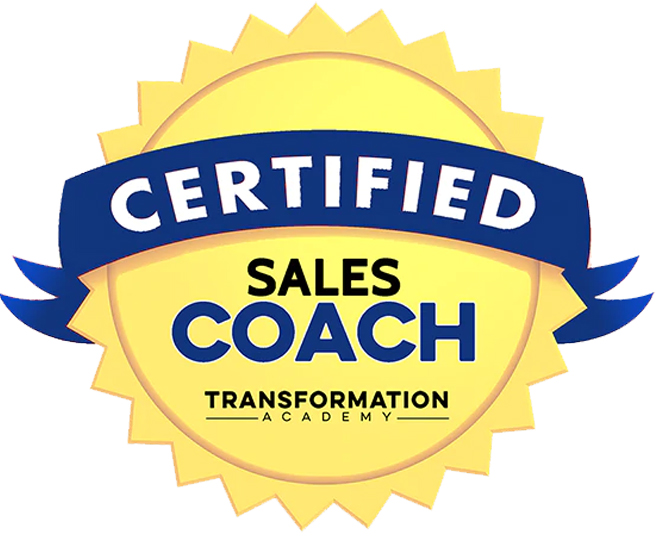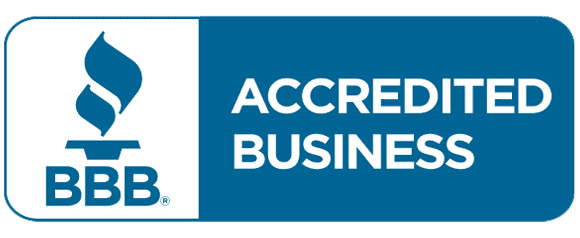Here is an example of phone prospecting. Let’s see how familiar this sounds to you.
Nate it’s a life coach who started his business almost a year ago and has prepared himself financially, physically and mentally to quit his full time job and focus his attention 100% on his new business. He spends many hours around town participating in networking meetings, where he meets a significant number of people who are willing to share their email addresses and phone numbers with him and look forward to hearing from him.
Nate, like most people, heads into his office each morning with every intention of getting on the phone and engaging his new prospects. As he reluctantly dials the first number on his calling list, his heart starts pounding, his palms get sweaty and he’s secretly praying that no one will answer. But many times, somebody does answer the phone, and that’s when Nate forgets what to say, stumbling over his words, so the prospect naturally ends the call quickly and brushes him off, with the classic “I’m not interested”, or “I don’t have time to talk now”.
At this point Nate feels rejected and embarrassed, and his motivation for calling the rest of the people on the list dissipates, despite knowing that he should continue to make those calls.
Because of his calling experience, Nate starts shuffling papers, moving them around the desk, wasting a lot of time trying to do anything but to dial a number again. He starts checking his emails, takes a look at social media, and tells himself that he has no time to call now because there is so much paperwork and administrative work to do.
It is no secret that cold calling and prospect calling is by far one of the least liked activities in sales. People truly despise using this technique, because calling and interrupting strangers can make them feel uncomfortable because they are aware that they will likely receive a good amount of rejection. Who likes to be uncomfortable and rejected right?
It’s unlikely that prospect calling is going to become more natural. It is more likely that prospect calling is always going to be uncomfortable, and there will always be calls and even days in which you will fumble your words, will feel embarrassed, and as a rule, will get more rejection than acceptance.
For these reasons, this section it’s called the art of prospecting, not the art of closing sales. The step of putting in the work of prospecting for your potential clients it’s part of the process and is absolutely necessary.
There is a large amount of money to be made in sales of just about anything, including in your own business, and if prospecting were easy, everyone would be in sales. Most of us learn to believe that prospecting for clients is not easy and truth being said, most people have not been taught how to speak on the phone properly, or if they have been taught proper sales call techniques, they likely have a certain bias towards communicating through email or text messaging. But this is not going to be you, because at the end of this course you are going to be much more prepared to find new potential clients through all the available sales prospecting venues, and hopefully you will be more comfortable in doing so.
If you have ever worked for a new bank or any company where prospecting calls were part of your job description, I am sure you have been through some type of sales call training When businesses do provide phone prospecting training, it can often be complicated and convoluted because the training was developed by people who’ve never used the phone successfully for prospecting or for selling anything. With training programs designed by those who have never had the experience of prospecting sales, the training usually falls short. This type of training can turn out to be discouraging and keeps the employees from using the phone successfully. There are companies and sales organizations who have their marketing department or even human resources develop sales scripts for their employees to read from, but in these cases as well, the marketing people who create those scripts may not have had to call a prospect and interrupt their day on a live call. If they were asked to do so they would feel just as nervous as prospecting callers. It should be a no-brainer that if you’ve never sold anything through prospect calling, you should not be able to build a sales training curriculum for somebody else. Unfortunately, most training curriculums are developed in marketing or HR to be included with new hire orientation. Of course, there are those companies that understand the benefit of involving the frontline personnel when developing job specific training programs. Those companies typically have successful training programs.
So, if your background is from the corporate world, and you know that any sales training you received was lacking, I would love for you to forget if possible, everything you have learned during your corporate training, and start with a clean slate, because by the end of this section you will know how to leverage the phone to maximize your sales. Through this lesson you will learn what to say when you get a prospect on the phone, how to reduce resistance and increase the probability that you will reach your goal. You will learn how to mitigate rejection, because if you want to be successful in business, of any kind, you need to be able to move past rejection and develop the skills you need to grow your business. Everyone needs paying clients to be successful, and prospecting, including phone email and even text prospecting, are vital parts of the sales process.
First, you will need to manage your time each day, reserving daily blocks of time, maybe one to two hours, to make phone calls. During this time it is important that you remove all distractions. Shut down your emails, your smart phones, and let your coworkers or your family know that you are making phone calls for the next hour or two and ask them not to disturb you.
Next, you will need to set clear goals for how many calls you are going to make. Some people prefer to break calling periods into smaller, more manageable chunks of time and then set the phone call goals for those chunks. Many people find that it is much easier to set a goal to make 10 calls than 100 calls. By starting with just a few phone calls at a time, and when finishing the number of calls established, you can offer yourself a small reward and move on to the next time block.
As an example, have by your side just your phone and a notebook from which you can easily tear out pages, a pen, and of course your call list. It can be very helpful to either turn off or have your cell phone away from your desk and use a landline or dedicated phone to eliminate all possible distractions. This will help you to keep focused and on track. If your only phone is your personal cell phone, try to use a “do not disturb” function which will keep incoming calls and messages from interrupting your flow.
Even though this process may seem mechanical or tedious, remember that it is also important to have fun with this. Try to set up challenges for yourself to make it fun. You could try a reward system, coupled with something to make you laugh. Maybe you like M&Ms. Try keeping a small bowl of M&Ms nearby and each time you get a YES, treat yourself to a few. When you get a NO, try to remember some of the things the person on the other end of the line said, and write down anything that you can use to your advantage later, or maybe something they said that made you want to laugh. This may sound a little strange but it can be motivating, since we already know that we will get more NOs than YESes, but finding benefit in the NOs will motivate you and challenge you to do better and stay on task.
The next piece is mindset preparation. The purpose of efficient and effective phone calling is to get you to a yes, or a no or a maybe as fast as possible and in the least intrusive way for your prospect., In order to do that you have to use a relaxed confident and professional tone of voice to reduce resistance.
When you pick up the phone and you call a prospect, or when you call a client to follow up, or make a call from a referral or an inbound lead for a sale, you will be interrupting those people’s day, so you want to avoid making them feel irritated, angry or resentful towards you.
If you were to receive a sales call, how would you like the conversation to go? You would likely want whoever is calling you to get to the point quickly so you can go back to whatever you were doing.
Of course, there are exceptions where some people, especially retired people, may enjoy talking to you for hours about the weather and everything else, but most people will want you to get to the point. This is exactly why your call must be structured. Try to relay the point of your call in 10 seconds or less and sound like an authentic professional, a human being rather than a scripted robot or a stereotypical salesperson that nobody likes. With practice and repetition, you will create consistency which in time will take the pressure off of you and your potential prospect.
Once you call and somebody answers you must first get their attention by using their name, followed next by identifying yourself, and telling them the reason why you’re calling. Next you will set the expectations for the call, and finally you will ask them what you want from them. Once you have posed a question, stay quiet to allow them to respond. Let them complete their full response. Interrupting someone can be frustrating and counterproductive. Their full response will also help you to gauge if they have understood the question and provides you the opportunity to give more clarification.
Example – Setting an appointment:
“Hello Kate, my name is John Smith and I am with ABC sales coaching. (person’s name and your identification) The reason I am calling is to set up an appointment with you because I just read an article online that said your business it’s going to add 10 new sales positions over the next six months. Several local businesses in your industry are already using ABC Sales Coaching exclusively for sourcing sales candidates and they’re very happy with the results we are delivering. I thought the best place to start is to schedule a short meeting to learn about your sales practices, your challenges, and goals. How about we meet Wednesday afternoon around 3:00 PM?” (Reason for the call and expectations for outcome, followed by an opening questions)
The opening of your call has to be delivered with no stopping in between, because the moment you stop you can lose control of the call. Once you ask the opening question, you do want to stop and listen. By following these call guidelines you will be respecting Kate’s time by getting to the point fast and waiting for an answer.
Example – gathering information from the prospect.
“Hello Jennifer, this is John Smith with ABC coaching. The reason I am calling is I learned through my networking meeting that you are building a Wellness facility in the area, and I want to learn more about your process for hiring coaches and consultants. I realize I’m calling a little early in the process, however I found that when we get our team working with our client before you make critical decisions about who to hire, you will have more clarity and options which can often save you a ton of money and Peace of Mind. Can you share with me how you make those decisions and when the selection process will begin?”
Example – qualify the prospect and move directly into a sales conversation:
“Hello Jessica, this is John Smith from ABC coaching. The reason I’m calling is that I can see you downloaded our course on creating more effective landing pages for businesses that generate leads. I’m interested to learn what triggered your interest. I work with several businesses who have been struggling to bring in enough quality leads to meet their growth objectives, and I have a few best practices that my clients are using to generate more and better leads that I would be happy to share with you. Would this coming Wednesday at 3pm ibe a good time for me to call so you can tell me more about your current situation and business goals and needs?”
As you can see in the three examples the structure of the message it’s the same and if you keep using this same structure you will find it easier to find your words and you will achieve your objectives more often. Think of the structure of your message as a guide to follow which will make you more agile and you will find it easier to adapt because it can be leveraged across many different situations. A structured call opening will provide you with clarity and with the advantage of creating an image of yourself that is professional.
A deeper dive into the structure of a call:
The first step was to get their attention, and how better to do that than to use their name? We all love to hear our name, and just simply saying hi Tom, we’ll catch Tom’s attention.
There is also a psychological reason behind starting your call by using a person’s name. When we interrupt someone’s day, we get resistance, wanted or not, and this resistance will grow as soon as they realize that you are trying to sell something. If you would say: “Hi this is John Smith from ABC coaching how are you today?” and then pause, your prospect’s instinct to get off the phone and go back to whatever they were doing kicks in and you set yourself up for being told I’m not interested.
So, don’t ask how they are doing, followed by a pause and an awkward silence, instead right after you say hi, say their name which they love to hear. Continue and introduce yourself briefly and then get right down to business by sharing the reason why you called in a transparent, honest way.
By telling them who you are and why you are calling you reduce their stress and make them more comfortable by knowing what to expect. If you are truthful and transparent, they will recognize your professionalism and the fact that you treat them with respect by being honest.
Follow Up up immediately with setting the expectations for the call will connect that bridge between what you want and why they should give it to you. And always, be mindful of their time.
A good method would be to use phrases and emotional words like in the examples: “I would like to learn more about you and your business”, or “I would like to share some insights that have helped other clients”, or “I would like to share some best practices”, but whatever words you use remember that the most important step in this message is to ask for what you want.
Author: Sanda Kruger
Sanda is an entrepreneur, real estate investor, health coach and professional dancer. Sanda is an entrepreneur with more than 20-year experience in business development and project management in the fields of life, health and fitness coaching. She is also a real estate investor and a banker, who learned outstanding adapted business strategies, sales and marketing techniques, communication, and goal setting skills, hands-on, through life and work experiences. She is a certified fitness professional and is the creator of two original fitness programs, called BellyCore® Fitness and AquaCor®.








